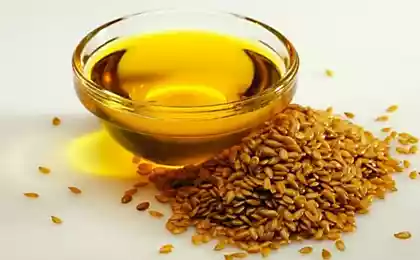1113
Caution — palmitic acid!

In 1988, Stanford University Professor Gerald Revin, speaking at the annual Butingsky lecture for endocrinologists, publicly voiced his assumption that cardiovascular disease, obesity and diabetes have a common cause of and are closely linked. Since then, this theory is considered the most likely dominant among doctors and scientists around the world.
Every year, according to official data of the world Health Organization, cardiovascular disease and diabetes in the world dies of about 20 million people, representing one third of the number of all deaths for the year.
Each year the world produces approximately 50 million tons of palm oil.
What can unite the mortality statistics from the most dangerous diseases with the production of palm oil? If you delve into the issue, you'll find that they share one chemical, which was opened in 1840, French scientist Edmond Fremi and received its name in honor of the palm oil from which it was first able to remove. This substance is palmitic acid. It refers to the fatty acid in palm oil, it amounts to about 50 %.
It so happened that today palm oil is added to products that contain large amounts of palmitic acid in ice cream, cream, sour cream, butter, cheese. Also it is added to chocolate, candy, pastry, chips, French fries, that is those products, which themselves can lead to excess body fat. Artificially enriched with palm oil and palmitic acid, these products turn into a time bomb, contributing to the deposition of fat in different tissues and organs. What binds palmitic acid with the most dangerous and common diseases from which people die all over the world more than wars, famines and natural disasters?
Scientists have long paid attention to the fact that the life expectancy of people may very much depend on which fatty acids predominate in their diet. For example, in Japan, the Scandinavian and Mediterranean countries, people consume foods with a lot of polyene fatty acids — eicosapentaenoic and docosahexaenoic, is contained in seafood. A distinctive feature of all these countries is the highest in the world life expectancy of their citizens. At the same time, most other fatty acids predominate in the diet of the inhabitants of the two largest powers in the post – Soviet space- Russia and Ukraine. In fatty meat and dairy products that form the basis of the diet of Russians and Ukrainians, there is a lot of saturated fatty acids, primarily palmitic. And maybe that's why Russia and Ukraine take the leading positions on mortality from diseases of the heart and blood vessels, losing a year of 1 million and 400 thousand respectively.
In the course of numerous studies in recent years have revealed that the excess in the body of palmitic acid can be a powerful factor in the emergence of various negative and very destructive processes. So, it is well established the potential ability of palmitic acid to start the process the physiological samosoznania cells, apoptosis. Scientists from the University of British Columbia, Vancouver (S. Rabkin, J. Kong), based on their research, found that palmitic acid can induce apoptosis through two main directions: "the High concentration of certain fatty acids can be harmful for the heart. Palmitate (accepted in the West the designation of palmitic acid) is one of the most common fatty acids and increases the level of programmed death in various cell types, including heart cells. The mechanism of palmitate-dependent cell death is not entirely clear, but it is of great importance because high levels of fatty acids present in patients with acute myocardial infarction and emphasizes the extent of myocardial damage..."
The inability of the palmitic acid is completely excreted from the body means that it will accumulate in the body, causing replacement of normal cells as much as fat bodies, liver, skeletal muscle, pancreas, thymus. Substance called ceramides, which are cited by canadian researchers, who are very aggressive in nature and can contribute to diverse pathologies. In humans, consuming food with a lot of saturated fatty acids (mainly palmitic), ceramides accumulating as a by-product of the metabolism of these acids and can cause not only cell death, but also provoke severe diseases, leading to destruction of neural tissues, such as Alzheimer's disease.
This is confirmed by many studies, including the experiments conducted by Ukrainian scientists from the Institute of biology of Kharkov University, headed by Professor N.. Babenko: "it is Shown that excessive fat content in the diet significantly increases the risk of diseases of the nervous tissues. High degree of saturation of fatty acids in your diet is one of the critical factors of risk of development of Alzheimer's disease".
The negative effects of ceramides so diverse and multidimensional that these substances can rightly be called one of the most dangerous for the human body. First, after the collapse of the ceramide formed another malicious stuff, sphingosine to be able to induce as apoptosis and cell necrosis (apoptosis is a natural process of destruction of cells that run physiological factors, in contrast to necrosis, which is non-physiological).
The appearance and accumulation of ceramides, produced as the final product of the assimilation of palmitic acid lead to:
• accumulation of harmful sphingosine in the tissues of the brain
• increased levels of cytokines and nitric oxide, which leads to a further increase of reactive oxygen species and oxidative damage of cellular structures
• to increase the synthesis of proteins tau and β-amyloid protein, which are now recognized as two most important negative factors in the emergence alzgeimerovsky changes in the brain
• ability to stop the normal renewal of cells by blocking cell cycle
In 2009 a group of scientists from several American universities ( S. Benoit, C. Cure 2009, etc.) together with their French colleagues published the results of joint research, which indicated the formation mechanisms of immunity of cells to insulin under the influence of palmitic acid. They established the exclusive role of this acid in the occurrence of immunity of the Central nervous system to insulin and another hormone, which plays an important role in the regulation of metabolic processes, leptin: "Recently, we showed that saturated fatty acids and, more specifically, palmitic acid, is the cause of insulin resistance in the brain. Resistance to the Central nervous system to the leptin and insulin reduces the ability of both hormones to regulate food intake and body weight in the presence of a diet high in saturated fat (palmitic acid), subsequently leads to obesity. In addition, we found that palmitic acid lowers the ability of insulin to activate their intracellular signaling pathways. It is important that the effects of palmitic acid are unique to this type of fatty acids. Consistently, it was demonstrated that a diet with a high content of monounsaturated fatty acids (oleic acid) prevents dietary fats caused insulin resistance, whereas a diet with a high content of palmitic acid accelerates the development of obesity."
Simultaneously with the insulin resistance under the action of excess of fatty acids occurs and resistance to the leptin. Leptin is the main hormone of adipose tissue, which regulates the level of fat reserves in the body and is involved in the formation of signals of hunger and fullness. It is established that the accumulation in the body excess fat deposits, stops the action of leptin on appropriate sites in the hypothalamus.
Along with this, and maybe, before that, a high level of saturated fatty acids will have an impact on the viscosity of the cell membrane. This property of the membrane, its microviscosity, is very important in the functioning of various intracellular signalling pathways, including glucose transport. To signals from receptors normally held inside the cells and initiating signaling cascades, the cell membrane must be very dense. Its liquefaction is achieved through the presence in the membrane phospholipids of unsaturated fatty acids. As soon as their place will be more saturated acids, membrane viscosity increases, and with it, will deteriorate the signal inside the cell, the cell will become "hard of hearing". Violated not only the work of the insulin receptor and many other receptors, which regulates the energy supply of the organism, its reproductive function and the immune system.
At the end of the last century Russian scientist V. M. Dilman hypothesized that the extinction of women's reproductive function and consequent rapid aging can be connected with the deterioration of the sensitivity of the receptors of hypothalamus, which produces hormones that control reproductive function. The deterioration of the sensitivity of the receptors of the hypothalamus, Dilman directly linked to raising blood levels of fatty acids, which leads to deterioration of the membrane. Like it or not, today is exactly is impossible to say, but without this hypothesis, compacted palmitic acid cell membrane represents a major pathological factor.
The resulting dysfunction of the insulin receptor will lead to other negative changes. Increase the level of glucose in the extracellular space. The cells do not receive glucose, will start to send signals to the brain about the energy (glucose) supply. In response, the liver starts the process called gluconeogenesis — synthesis of glucose molecules from local funds, mostly from amino acids. And the result is a high level of unused glucose will increase. In order to utilize this glucose, the pancreas will increase insulin production, high levels of which will launch a new harmful mechanisms in the formation of arterial hypertension and atherosclerosis.
Today it is known that an excess of fatty acids, primarily palmitic, increases the generation of reactive oxygen species (ROS) and cause oxidative stress. Oxidative stress is an obligatory companion of high levels of fatty acids, which the mitochondria of the cells are not able to cope. The result is lipid peroxidation, is able to grow cascade, damaging everything in its path — from cell membranes to DNA. "Our studies show that excess palmitate leads to formation of reactive intermediates and programmed cell death. Apoptosis caused by fatty acids, may contribute to cell death of the heart, and death of β-cells of the pancreas" — write about the results of their research, American scientists from the Center for cardiovascular research University in St Louis (L. Listenberger et al.). Also the oxidative stress caused by palmitic acid could be the cause of the shortening of the ends of DNA (telomeres) and degeneration of connective tissue proteins, collagen and elastin. The consequence of all these processes is always the same: premature aging and death.
Not so long ago it was discovered one property of fatty foods with a high content of palmitic acid, which helps to understand the mechanisms of the harmful effects of such products on humans. Professor Deborah Clegg and her colleagues from the University of Texas failed to explain why people so often fall into the "network" immoderate gluttony: "We were able to show how in a very short period of time, the brain chemistry can be changed significantly. When you eat something very fatty, fatty acids literally "hit" to the brain, and you become immune to insulin and leptin. And while the brain gives the command to cease there — you do not feel the saturation and the result overeat. We found that palmitic acid reduced the ability of leptin and insulin to activate their intracellular signaling cascades. Oleic acid did not. The effect was specific for palmitic acid".
That's why many people constantly feel hunger fatty food literally suppresses the hormone leptin, which needs to send to the brain a signal about saturation. It's like a conspiracy to ruin a man at any cost: once you send in the mouth of another batch of overly greasy food, all beneficial processes in the body begin to be suppressed by the adverse impact of a certain type of fatty acids. And this impact is growing, is growing and gaining strength, until, in the end, not taking in the body the whole "power" and will not send the person to the grave.
If you try to find out why palm oil is so attractive to manufacturers, it will be possible to discover two of its main competitive quality: relative low cost and long shelf life. Due to what is achieved in this long period of storage, during which the palm oil and enriched food are not subject to deterioration? Apparently, this is achieved by such properties of this oil, as the dense structure and a very high melting point of its fat, which prevent the hydrolysis and act as a preservative. These properties of palm oil is mainly due to the configuration of the structure of palmitic acid, similar to consisting of 16 carbon atoms, a straight stick, which contributes to its tight packing in the composition of dietary fat. This package resembles a stack of flat, well-adjusted to each other's logs, so closely adjacent to each other that together they form a monolithic construction. Other fatty acids, such as oleic, has a curved structure and therefore can not be Packed in fats so superdense. The structure of fatty acids is very important because the denser packing of the molecules, the higher temperature transitions in other phases. For example, the melting point of the triglycerides with only palmitic acids (tripalmitate) is 49 °C, and trioleate is only 17 °C. it is Clear that at such high temperatures the melting palmitic triglycerides can't handle none of lipase human body, and they become nefiziologichnoe and can't transform human proteins into useful products.
This is a positive for manufacturers and sellers of quality palm oil — resistance deterioration — it turns into quite another, not so pleasant side to consumers. And all because and in the human body this oil will be stored as long as on the shelves. And that's what is facing such an important organ, like the liver.
Excessive dietary intake of palmitic acid leads to the formation of nesilevich triglycerides, which the body can't digest. Accumulate in liver cells "dead" weight, it will form a fatty liver disease, steatosis. Then overloaded nefiziologichnoe triglycerides liver cells start to die exposed to the self-destruct mechanism, apoptosis. Their dead remains will accumulate in the intracellular environment of the liver and trigger the appearance of the next stage fatty lesions — inflammatory response and the transition of steatosis to steatohepatitis, which logically ends with cirrhosis of the liver, unless cardiovascular complications before will not bring the person to the grave.
These cardiovascular complications that swept the whole world, are a direct consequence of ingrained eating habits and not normal sedentary lifestyle of modern man. Endless media propaganda of unbridled gluttony, masquerading under the guise of a refined gourmet, and overly focused on profit maximization of food production can only exacerbate the situation. And palm oil, manufacturers now add in everything, can play in the sad statistics of deaths from heart attacks and strokes, apparently, not last role.
"The high content of palmitinic fatty acid in food is the main reason for the increase in cholesterol low-density lipoprotein" — says the famous Russian biologist V. N. Titov, one of the most competent experts in atherosclerosis and fatty acids. Cholesterol low-density lipoprotein — the so-called "bad" cholesterol. Although in nature there is no bad cholesterol, relatively "bad" it makes one specific property of these lipoproteins. Consisting mainly of palmitic acid, they become in the circulatory system of biological "garbage", which immune cells will be perceived as a foreign body. And that after the interaction of immune cells with these lipoproteins occur in the blood vessels prone to rupture and thrombus formation atherosclerotic plaques.
The saddest thing in this whole story with palm oil is that it is added mainly in those products which are adored by our children. In 2005, palm oil has been recognized by the world Health Organization product potentially dangerous to human health, from the use of which it is necessary to refrain. This is stated in the official document of who, "Avoiding Heart Attacks and Strokes. Don't be a victim Protect yourself" (Preventing heart attacks and strokes. Don't be a victim — protect yourself).
Apparently, the experts who were supposed to be good reasons for these sorts of definitions and conclusions. And perhaps it would be wise for all who would like to stay longer young and healthy and raise healthy children, listen to these insights and to limit the consumption of potentially dangerous products. published
Author: toke Rzheshevskiy
P. S. And remember, only by changing their consumption — together we change the world! ©
Source: www.oum.ru/literature/zdorovje/ostorogno-kislota-palmitinovaya/























